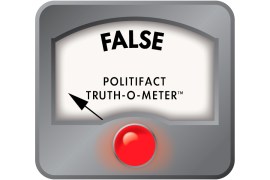Why does e-cigarette maker Juul advertise its product on TV when cigarette ads are banned? The short answer: Because it can.
For nearly 50 years, cigarette advertising has been banned from TV and radio. But electronic cigarettes — those battery-operated devices that often resemble oversized USB flash drives with flavored nicotine “pods” that clip in on the end — aren’t addressed in the law.
Since launching its product in 2015, Juul Labs, based in San Francisco, has taken the e-cigarette market by storm, and now accounts for roughly 75% of e-cigarette sales at convenience stores and mass retail outlets. Until recently, TV ads haven’t played a role in Juul’s marketing, which relied primarily on social media.
But this year, the company launched a $10 million TV advertising campaign, “Make the Switch,” that it said was aimed at helping adults find a healthier alternative to smoking cigarettes. The campaign also features print and radio ads.
Many public health advocates are skeptical of the company’s repeated assertions that adult smokers are its target audience. When the company launched its sleek e-cigarette four years ago, it relied on social media outlets such as Facebook, Instagram and Twitter to promote its product in ads that, especially at the beginning, featured playful, partying 20-somethings.
As the product caught on, young people helped spread the word to other young people using hashtags like #juul. Social media influencers who posted content praising Juul amplified the message.
“There’s overwhelming evidence that the behavior of Juul contributed to the product being sold to youth,” said Dr. Robert Jackler, a professor and the principal investigator at Stanford Research Into the Impact of Tobacco Advertising (SRITA) at the university’s medical school.
Juul said it is not targeting children and teens and supports efforts to limit tobacco products to people under age 21. “We recognize that youth use of vapor products is a problem that requires an effective and appropriate response from industry and regulatory bodies,” said Ted Kwong, a Juul Labs spokesman. “We strongly support restrictions on social media marketing of vapor products.”
In recent years, the number of high schoolers and even younger kids who say they’ve used e-cigarettes has grown rapidly, alarming parents and public health advocates.
Last year, almost 21% of high school students reported using e-cigarettes in the previous 30 days, according to an analysis of National Youth Tobacco Survey data published by the federal Centers for Disease Control and Prevention. In 2011, the proportion was just 1.5%. Between 2017 and 2018 alone, the number of high school students who said they were current e-cigarette users grew by 78%, to more than 3 million students overall. The CDC said 1 in 20 middle school students, those in grades 6 through 8, reported vaping in the previous 30 days.
In contrast, 3% of adults said they used e-cigarettes in 2017, according to the CDC.
E-cigarettes, also called vapes, were introduced in the United States in the mid-2000s. Some early versions resembled actual cigarettes. Juul’s product can be plugged into a USB port to recharge and fits inconspicuously into the palm, often frustrating parents and teachers seeking to stop teens from using it.
There’s evidence that smoking e-cigarettes may act as a “gateway” that leads young people to try cigarette smoking. And cigarette smoking remains the leading cause of preventable death, killing more than 480,000 people in the United States every year.
E-cigarettes don’t produce tar, in which most of the cancer-causing and other harmful chemicals from tobacco smoke are found. But both products contain nicotine, which is highly addictive and can harm the developing brains of adolescents.
In addition, the vapor that people inhale when the liquid nicotine in e-cigarettes is heated may contain cancer-causing chemicals, heavy metals and other dangerous substances.
Nevertheless, e-cigarettes are often touted as a healthier alternative to cigarette smoking, and that’s the premise of Juul’s “Make the Switch” campaign. The testimonial ads feature adults describing the positive changes in their lives after they gave up smoking cigarettes to use Juul.
“We want adult smokers to hear directly from former adult smokers that Juul Labs provides a true alternative to combustible cigarettes and is showing unprecedented success, with studies showing 40 to 56 percent of adult smokers fully switching within 90 days of use,” said Kwong.
Although adolescents may be more likely to see ads in social media than traditional broadcast and print ads, the Juul TV ads probably have an impact on them, said Bonnie Halpern-Felsher, a professor of pediatrics at Stanford University School of Medicine who developed a tobacco prevention toolkit for teachers.
“When you say that a product is for an adult, the message is not ‘Don’t use,’ it’s ‘Use these products and you’ll appear to be adult or mature,’” Halpern-Felsher said.
Anti-smoking advocates would like to see the same marketing limits applied to e-cigarettes that apply to so-called combustible cigarettes, including banning them from advertising on TV and radio.
They would also like to see the changes that were put in place under the Master Settlement Agreement in 1998 between the largest cigarette manufacturers and the attorneys general of 46 states applied to e-cigarettes. The states had sued the cigarette makers to recover their costs for treating sick and dying smokers. Among other things, the agreement banned most transit and billboard advertising of cigarettes, branded merchandise, free product samples and sponsorships of events, such as concerts and sporting events.
E-cigarette makers, such as Juul, have used some of those advertising methods over the years.
Last year, after the federal Food and Drug Administration said it was cracking down on an “epidemic” of teen vaping, Juul announced changes to its marketing activities.
The company shut down its Facebook and Instagram accounts and limited Twitter communications to non-promotional posts, Kwong said.
That’s like closing the door to the barn after the horse has left, said public health advocates. Young people, they added, are continuing to post about Juul on those sites.
“It’s too late,” said Dave Dobbins, chief operating officer at the Truth Initiative, an anti-tobacco advocacy group. “The kids are doing their work for them.”
This story was produced by KFF Health News, which publishes California Healthline, an editorially independent service of the California Health Care Foundation.







